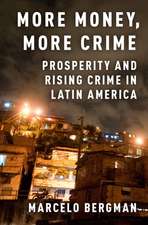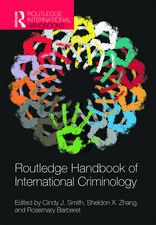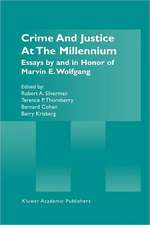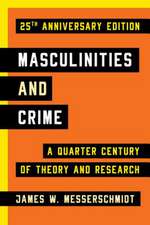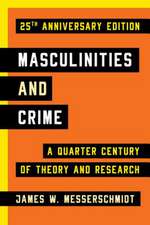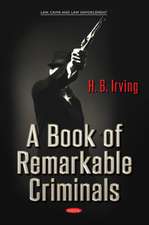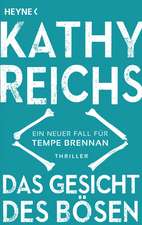Teasing Secrets from the Dead: My Investigations at America's Most Infamous Crime Scenes
Autor Emily Craig Kathy Reichsen Limba Engleză Paperback – 31 aug 2005
In this absorbing, surprising, and undeniably compelling book, forensics expert Emily Craig tells her own story of a life spent teasing secrets from the dead.
Emily Craig has been a witness to history, helping to seek justice for thousands of murder victims, both famous and unknown. It’s a personal story that you won’t soon forget. Emily first became intrigued by forensics work when, as a respected medical illustrator, she was called in by the local police to create a model of a murder victim’s face. Her fascination with that case led to a dramatic midlife career change: She would go back to school to become a forensic anthropologist—and one of the most respected and best-known “bone hunters” in the nation.
As a student working with the FBI in Waco, Emily helped uncover definitive proof that many of the Branch Davidians had been shot to death before the fire, including their leader, David Koresh, whose bullet-pierced skull she reconstructed with her own hands. Upon graduation, Emily landed a prestigious full-time job as forensic anthropologist for the Commonwealth of Kentucky, a state with an alarmingly high murder rate and thousands of square miles of rural backcountry, where bodies are dumped and discovered on a regular basis. But even with her work there, Emily has been regularly called to investigations across the country, including the site of the terrorist attack on the Murrah Building in Oklahoma City, where a mysterious body part—a dismembered leg—was found at the scene and did not match any of the known
victims. Through careful scientific analysis, Emily was able to help identify the leg’s owner, a pivotal piece of evidence that helped convict Timothy McVeigh.
In September 2001, Emily received a phone call summoning her to New York City, where she directed the night-shift triage at the World Trade Center’s body identification site, collaborating with forensics experts from all over the country to collect and identify the remains of September 11 victims.
From the biggest news stories of our time to stranger-than-true local mysteries, these are unforgettable stories from the case files of Emily Craig’s remarkable career.
From the Hardcover edition.
Preț: 111.01 lei
Nou
Puncte Express: 167
Preț estimativ în valută:
21.24€ • 22.18$ • 17.54£
21.24€ • 22.18$ • 17.54£
Carte disponibilă
Livrare economică 25 martie-08 aprilie
Preluare comenzi: 021 569.72.76
Specificații
ISBN-13: 9781400049233
ISBN-10: 1400049237
Pagini: 284
Dimensiuni: 132 x 203 x 17 mm
Greutate: 0.33 kg
Editura: Three Rivers Press (CA)
ISBN-10: 1400049237
Pagini: 284
Dimensiuni: 132 x 203 x 17 mm
Greutate: 0.33 kg
Editura: Three Rivers Press (CA)
Notă biografică
Dr. Emily Craig holds a Ph.D. in forensic anthropology and is the state forensic anthropologist for the Commonwealth of Kentucky, the only such full-time state position in the country. She has been profiled on such shows as Fox’s America’s Most Wanted, A&E’s Cold Case Files, the Discovery Channel’s The New Detectives, Lifetime’s Unsolved Mysteries, CBS’s 48 Hours, NBC’s Extra, and the History Channel. Visit her at www.emilycraig.com.
From the Hardcover edition.
From the Hardcover edition.
Extras
1:Death Comes Knocking
Pale Death with impartial tread beats at the poor man's cottage door and at the palaces of kings. —Horace
My first case started just as so many cases begin for me today—with an unidentified victim. A couple of bass fishermen had found some decomposed and partially skeletonized remains on the edge of West Point Lake, one of the huge Chattahoochee River impoundments that separate the lower portions of Alabama and Georgia. The man had been shot in the head and his body had washed up onto the riverbank. The Georgia Bureau of Investigation (GBI) had been working the case, but after several weeks, they still had no identification for the victim, and it looked as if this murder might be headed for the cold-case files.
I was still a civilian then, a medical illustrator at a nearby orthopedic clinic, but the police thought I might be able to help by doing a clay facial reconstruction of the victim. When police officers escorted me into the forensic morgue for the first time, I had my first whiff of the smell of decayed human flesh. It was like nothing I'd ever experienced, and I felt an overpowering sense of repulsion. Yet I was also drawn to the mass of bone and decaying tissue that once had been a man—I'd never seen anything like it before. It was slimy and grayish, with bits of bone and rotting leaves and twigs sticking up randomly from a form that I could still recognize as human—but this form had flattened, melted into the black vinyl of the body bag.
As the investigators began to tell me what they knew, I was amazed at how much they'd already learned simply from examining the remains. Enough pelvic soft tissue remained to reveal that this victim was a man; and the coroner, Don Kilgore, had estimated his height from the size label sewn into the trouser remnants that still clung to his leg bones. Now Don gently held the head, which had decomposed down to bare bone, and he showed me the bullet hole, explaining how he could tell where the bullet had entered the man's head, and at what angle. Don had been lucky: He'd recovered a .45-caliber bullet from inside the skull. If police could only link a suspect to the victim, they might be able to solve the crime by comparing bullet evidence.
But the first step, as in every murder investigation, was to identify the victim. Don pointed to some fillings in the man's teeth. If they could just get someone to suggest a name for the victim, he told me, they could probably match the man's teeth to a missing person's dental records. They were starting to lose hope, though. This victim's remains had been here in the morgue for way too long already, and so far no one had come forward with a name.
That's where I came in. At the time, I was dating a detective, Brian McGarr, and all I knew of crime was what I'd heard from him, as he kept me up nights with long, grisly stories of his latest homicide cases. He, in turn, had the incredible good luck to hear all about my exciting work as a medical artist and sculptor, which he at least had the good grace to pretend to find fascinating. Still, maybe he was more interested than I thought. When the West Point case continued to go unsolved, he was the one to suggest to the GBI and the Muscogee County coroner that they commission me to do the facial reconstruction that might help them identify their victim.
Brian and I had a relationship that nicely blended the personal and the professional. He was able to share with me confidential information about police work because I was a volunteer emergency medical technician (EMT) on the local ambulance squad, which gave me an insider's knowledge of the grisly facts surrounding some of his murder cases. Both Brian and I had spent time in the privileged zone behind the yellow crime scene tape, so we understood that unauthorized release of confidential information was forbidden. Still, when professional ethics allowed, we would sit on my back porch for hours hammering out different scenarios that could have caused specific injuries. Sometimes we'd even act out the cases, taking turns playing "killer" and "victim." When Brian had to testify in court, I'd help him mentally prepare by acting as devil's advocate, pummeling him with questions that challenged his findings at the crime scene. I could also add anatomical facts that supported—or, sometimes, refuted—his interpretation of the victim's fatal injuries. Those conversations were where I first learned to think like a detective. I like to think that, at the same time, Brian was learning to think like a scientist.
Certainly, when it came to analyzing a crime scene and events that led to a murder, Brian was the undisputed expert. But once he realized that my formal training as a medical illustrator enabled me to figure out bullet trajectories and other injury patterns just by reading the autopsy reports, he knew my input was just as valuable as his. At the time, I had no idea that these late-night conversations were actually expanding my understanding of human anatomy and laying the groundwork for a future in forensic anthropology and law enforcement.
A few months before, I'd had my first experience as part of a law enforcement team. Brian had recommended me to do a drawing for an upcoming murder trial. This drawing became a pivotal piece of evidence, enabling prosecutors to demonstrate the pattern of a victim's stab wounds: The injured man was defending himself, not initiating an attack, as the murderer claimed. The D.A. won his case.
It was a heady experience for me, as well. To produce my drawing, I'd been given access to confidential information, and I even became involved with prosecution strategy. The excitement was intoxicating, and I found myself rethinking my current career as a medical illustrator, which began to seem humdrum and predictable by comparison. Brian knew how much I'd come to yearn for something new and exciting, which may have been why he recommended me for the facial reconstruction job.
Still, flattered though I was, I wanted to say no. An anatomical drawing for a trial was one thing. But a sculpture for an ongoing investigation? First of all, I wasn't trained in the technique. Second, this was serious stuff. If I got it wrong, I might ruin their last chance to crack the case.
I wanted to help, though, and I thought I could at least do a little liaison work. So I called Betty Pat Gatliff, a friend and medical illustrator who was also one of the world's best-known forensic sculptors. Her lectures at conferences had fascinated me for years. I'd hung on her every word as she described her work in helping to identify some of the twenty-eight victims of the serial killer John Wayne Gacy, as well as victims of the Green River Killer. One of her first success stories concerned a young Native American who had disappeared years before. Betty Pat produced a facial reconstruction that bore an incredible likeness to the victim and led to the man's positive identification. This brought her more referrals from medical examiners across the country.
On one referral, she actually used her knowledge of human skulls to uncover a flaw in the initial investigation. Skeletal remains and the victim's clothing had been discovered in a remote section of the Southwest, and the victim's bra, lace panties, and high-heeled pumps were collected along with the bones. Naturally, the detectives assumed the victim was female. But when Betty Pat was brought in to do one of her now-famous facial reconstructions, she realized that the skull may have actually belonged to a man. Further forensic anthropology analysis proved her right, and the detectives went on to identify the remains as those of a man who secretly cross-dressed and who had apparently been killed when a prospective lover discovered the deception.
Now, when I approached Betty Pat about the West Point case, she was just as pleasant as I'd remembered--but not very encouraging. "My plate is fuller than full," she said apologetically. "I couldn't get to this case for at least a year. Why don't you take my course and do it yourself?"
Me? Attend a workshop on forensic sculpture? I was working full-time at a clinic specializing in sports medicine. How could I fit a whole other course of study into my schedule? Still, I was intrigued—and tempted. I haltingly told Betty Pat that I'd think about coming to her class, not realizing how much that conversation would change my life.
Looking back, I realize that, in many ways, my talk with Betty Pat was merely the next step in a journey I'd been on since childhood. For as long as I can remember, I have been blessed—or maybe cursed—with an insatiable curiosity about the human body. Call me crazy, but my idea of a good time is a pile of mysterious bones to analyze, the chance to dissect the bloody knee of a freshly delivered cadaver, or maybe a long session of photographing a partially decayed face—anything to satisfy my endless fascination with the form and function of our bones, muscles, and tendons.
As a girl growing up in Kokomo, Indiana, in the 1950s and 1960s, I was discouraged from choosing a career in science, as well as from engaging in other kinds of "boy stuff." So my fascination with science made me feel like a misfit, though given my family history, it should have made sense: My dad, his dad, and my mother's grandfather had all been doctors. How could I help myself?
My father's medical books especially fascinated me. I got his permission to take them off his library shelves—and became hooked. Looking through those books, I felt as though I had entered into another world. I spent hours admiring the full-color renderings of what I might see inside an arm, a leg, or an abdomen. Although he never expected me to make a career in science or medicine, Dad encouraged my interest in those books. I guess he was thrilled that he could share his passion for anatomy with at least one of his four kids.
One afternoon when I was about twelve, I was out in a trout stream near a vacation cabin we owned near Baldwin, Michigan. Suddenly, I caught sight of some bones sticking out of the sandy bank. At that point in my life, it took quite a lot for me to put down my fly rod voluntarily, especially when the trout were biting. But those bones were just too intriguing. I waded over to the bank and pulled a few out of the sand. Just below, under the water, I could see that more were deeply embedded in the black muck just below the surface of the streambed. I was sure that I had stumbled upon a deer's antlers, some ribs, and a pelvis. That was it. I knew I couldn't leave until I had found every single piece of that skeleton.
As I searched for the smooth butter-colored bones among the rocks and sticks at the bottom of the creek, I completely lost track of time. When I suddenly realized that it was starting to get dark, I knew my parents would be frantic. I stuffed all the bones that would fit into my wicker creel, the basket for carrying the fish I'd caught, and thrust the others into a sack I had improvised out of my rain poncho. I reached the path back to our cabin in record time, just as my dad showed up to look for me.
Before Dad could scold me for being late, I dumped the bones at his feet and breathlessly asked him to help me reassemble them, figuring that any doctor could put a skeleton together without thinking twice. But Dad had no idea where to start. He knew where every bone was located while in the body, but assembling skeletons hadn't been part of his training. Out of context, the bones just didn't make any sense to him.
That was one time my dad couldn't help me. But he was wise enough to see that I had found something that was hugely important to me. Even though it was nearly twilight, Dad walked me back to my fishing spot and waited quietly on the bank while I finished doing my first-ever skeletal excavation. Then he offered moral support for the next two days, as I tried to put those bones back together in our backyard.
Of course, I couldn't do it. But I promised myself that someday, somehow, I would put a skeleton back together—and a human skeleton, too, not just an animal one.
Pale Death with impartial tread beats at the poor man's cottage door and at the palaces of kings. —Horace
My first case started just as so many cases begin for me today—with an unidentified victim. A couple of bass fishermen had found some decomposed and partially skeletonized remains on the edge of West Point Lake, one of the huge Chattahoochee River impoundments that separate the lower portions of Alabama and Georgia. The man had been shot in the head and his body had washed up onto the riverbank. The Georgia Bureau of Investigation (GBI) had been working the case, but after several weeks, they still had no identification for the victim, and it looked as if this murder might be headed for the cold-case files.
I was still a civilian then, a medical illustrator at a nearby orthopedic clinic, but the police thought I might be able to help by doing a clay facial reconstruction of the victim. When police officers escorted me into the forensic morgue for the first time, I had my first whiff of the smell of decayed human flesh. It was like nothing I'd ever experienced, and I felt an overpowering sense of repulsion. Yet I was also drawn to the mass of bone and decaying tissue that once had been a man—I'd never seen anything like it before. It was slimy and grayish, with bits of bone and rotting leaves and twigs sticking up randomly from a form that I could still recognize as human—but this form had flattened, melted into the black vinyl of the body bag.
As the investigators began to tell me what they knew, I was amazed at how much they'd already learned simply from examining the remains. Enough pelvic soft tissue remained to reveal that this victim was a man; and the coroner, Don Kilgore, had estimated his height from the size label sewn into the trouser remnants that still clung to his leg bones. Now Don gently held the head, which had decomposed down to bare bone, and he showed me the bullet hole, explaining how he could tell where the bullet had entered the man's head, and at what angle. Don had been lucky: He'd recovered a .45-caliber bullet from inside the skull. If police could only link a suspect to the victim, they might be able to solve the crime by comparing bullet evidence.
But the first step, as in every murder investigation, was to identify the victim. Don pointed to some fillings in the man's teeth. If they could just get someone to suggest a name for the victim, he told me, they could probably match the man's teeth to a missing person's dental records. They were starting to lose hope, though. This victim's remains had been here in the morgue for way too long already, and so far no one had come forward with a name.
That's where I came in. At the time, I was dating a detective, Brian McGarr, and all I knew of crime was what I'd heard from him, as he kept me up nights with long, grisly stories of his latest homicide cases. He, in turn, had the incredible good luck to hear all about my exciting work as a medical artist and sculptor, which he at least had the good grace to pretend to find fascinating. Still, maybe he was more interested than I thought. When the West Point case continued to go unsolved, he was the one to suggest to the GBI and the Muscogee County coroner that they commission me to do the facial reconstruction that might help them identify their victim.
Brian and I had a relationship that nicely blended the personal and the professional. He was able to share with me confidential information about police work because I was a volunteer emergency medical technician (EMT) on the local ambulance squad, which gave me an insider's knowledge of the grisly facts surrounding some of his murder cases. Both Brian and I had spent time in the privileged zone behind the yellow crime scene tape, so we understood that unauthorized release of confidential information was forbidden. Still, when professional ethics allowed, we would sit on my back porch for hours hammering out different scenarios that could have caused specific injuries. Sometimes we'd even act out the cases, taking turns playing "killer" and "victim." When Brian had to testify in court, I'd help him mentally prepare by acting as devil's advocate, pummeling him with questions that challenged his findings at the crime scene. I could also add anatomical facts that supported—or, sometimes, refuted—his interpretation of the victim's fatal injuries. Those conversations were where I first learned to think like a detective. I like to think that, at the same time, Brian was learning to think like a scientist.
Certainly, when it came to analyzing a crime scene and events that led to a murder, Brian was the undisputed expert. But once he realized that my formal training as a medical illustrator enabled me to figure out bullet trajectories and other injury patterns just by reading the autopsy reports, he knew my input was just as valuable as his. At the time, I had no idea that these late-night conversations were actually expanding my understanding of human anatomy and laying the groundwork for a future in forensic anthropology and law enforcement.
A few months before, I'd had my first experience as part of a law enforcement team. Brian had recommended me to do a drawing for an upcoming murder trial. This drawing became a pivotal piece of evidence, enabling prosecutors to demonstrate the pattern of a victim's stab wounds: The injured man was defending himself, not initiating an attack, as the murderer claimed. The D.A. won his case.
It was a heady experience for me, as well. To produce my drawing, I'd been given access to confidential information, and I even became involved with prosecution strategy. The excitement was intoxicating, and I found myself rethinking my current career as a medical illustrator, which began to seem humdrum and predictable by comparison. Brian knew how much I'd come to yearn for something new and exciting, which may have been why he recommended me for the facial reconstruction job.
Still, flattered though I was, I wanted to say no. An anatomical drawing for a trial was one thing. But a sculpture for an ongoing investigation? First of all, I wasn't trained in the technique. Second, this was serious stuff. If I got it wrong, I might ruin their last chance to crack the case.
I wanted to help, though, and I thought I could at least do a little liaison work. So I called Betty Pat Gatliff, a friend and medical illustrator who was also one of the world's best-known forensic sculptors. Her lectures at conferences had fascinated me for years. I'd hung on her every word as she described her work in helping to identify some of the twenty-eight victims of the serial killer John Wayne Gacy, as well as victims of the Green River Killer. One of her first success stories concerned a young Native American who had disappeared years before. Betty Pat produced a facial reconstruction that bore an incredible likeness to the victim and led to the man's positive identification. This brought her more referrals from medical examiners across the country.
On one referral, she actually used her knowledge of human skulls to uncover a flaw in the initial investigation. Skeletal remains and the victim's clothing had been discovered in a remote section of the Southwest, and the victim's bra, lace panties, and high-heeled pumps were collected along with the bones. Naturally, the detectives assumed the victim was female. But when Betty Pat was brought in to do one of her now-famous facial reconstructions, she realized that the skull may have actually belonged to a man. Further forensic anthropology analysis proved her right, and the detectives went on to identify the remains as those of a man who secretly cross-dressed and who had apparently been killed when a prospective lover discovered the deception.
Now, when I approached Betty Pat about the West Point case, she was just as pleasant as I'd remembered--but not very encouraging. "My plate is fuller than full," she said apologetically. "I couldn't get to this case for at least a year. Why don't you take my course and do it yourself?"
Me? Attend a workshop on forensic sculpture? I was working full-time at a clinic specializing in sports medicine. How could I fit a whole other course of study into my schedule? Still, I was intrigued—and tempted. I haltingly told Betty Pat that I'd think about coming to her class, not realizing how much that conversation would change my life.
Looking back, I realize that, in many ways, my talk with Betty Pat was merely the next step in a journey I'd been on since childhood. For as long as I can remember, I have been blessed—or maybe cursed—with an insatiable curiosity about the human body. Call me crazy, but my idea of a good time is a pile of mysterious bones to analyze, the chance to dissect the bloody knee of a freshly delivered cadaver, or maybe a long session of photographing a partially decayed face—anything to satisfy my endless fascination with the form and function of our bones, muscles, and tendons.
As a girl growing up in Kokomo, Indiana, in the 1950s and 1960s, I was discouraged from choosing a career in science, as well as from engaging in other kinds of "boy stuff." So my fascination with science made me feel like a misfit, though given my family history, it should have made sense: My dad, his dad, and my mother's grandfather had all been doctors. How could I help myself?
My father's medical books especially fascinated me. I got his permission to take them off his library shelves—and became hooked. Looking through those books, I felt as though I had entered into another world. I spent hours admiring the full-color renderings of what I might see inside an arm, a leg, or an abdomen. Although he never expected me to make a career in science or medicine, Dad encouraged my interest in those books. I guess he was thrilled that he could share his passion for anatomy with at least one of his four kids.
One afternoon when I was about twelve, I was out in a trout stream near a vacation cabin we owned near Baldwin, Michigan. Suddenly, I caught sight of some bones sticking out of the sandy bank. At that point in my life, it took quite a lot for me to put down my fly rod voluntarily, especially when the trout were biting. But those bones were just too intriguing. I waded over to the bank and pulled a few out of the sand. Just below, under the water, I could see that more were deeply embedded in the black muck just below the surface of the streambed. I was sure that I had stumbled upon a deer's antlers, some ribs, and a pelvis. That was it. I knew I couldn't leave until I had found every single piece of that skeleton.
As I searched for the smooth butter-colored bones among the rocks and sticks at the bottom of the creek, I completely lost track of time. When I suddenly realized that it was starting to get dark, I knew my parents would be frantic. I stuffed all the bones that would fit into my wicker creel, the basket for carrying the fish I'd caught, and thrust the others into a sack I had improvised out of my rain poncho. I reached the path back to our cabin in record time, just as my dad showed up to look for me.
Before Dad could scold me for being late, I dumped the bones at his feet and breathlessly asked him to help me reassemble them, figuring that any doctor could put a skeleton together without thinking twice. But Dad had no idea where to start. He knew where every bone was located while in the body, but assembling skeletons hadn't been part of his training. Out of context, the bones just didn't make any sense to him.
That was one time my dad couldn't help me. But he was wise enough to see that I had found something that was hugely important to me. Even though it was nearly twilight, Dad walked me back to my fishing spot and waited quietly on the bank while I finished doing my first-ever skeletal excavation. Then he offered moral support for the next two days, as I tried to put those bones back together in our backyard.
Of course, I couldn't do it. But I promised myself that someday, somehow, I would put a skeleton back together—and a human skeleton, too, not just an animal one.
Descriere
In this absorbing, surprising, and undeniably compelling book, forensics expert Emily Craig tells her own story of a life spent teasing secrets from the dead. From the biggest news stories to stranger-than-true local mysteries, these are unforgettable.

